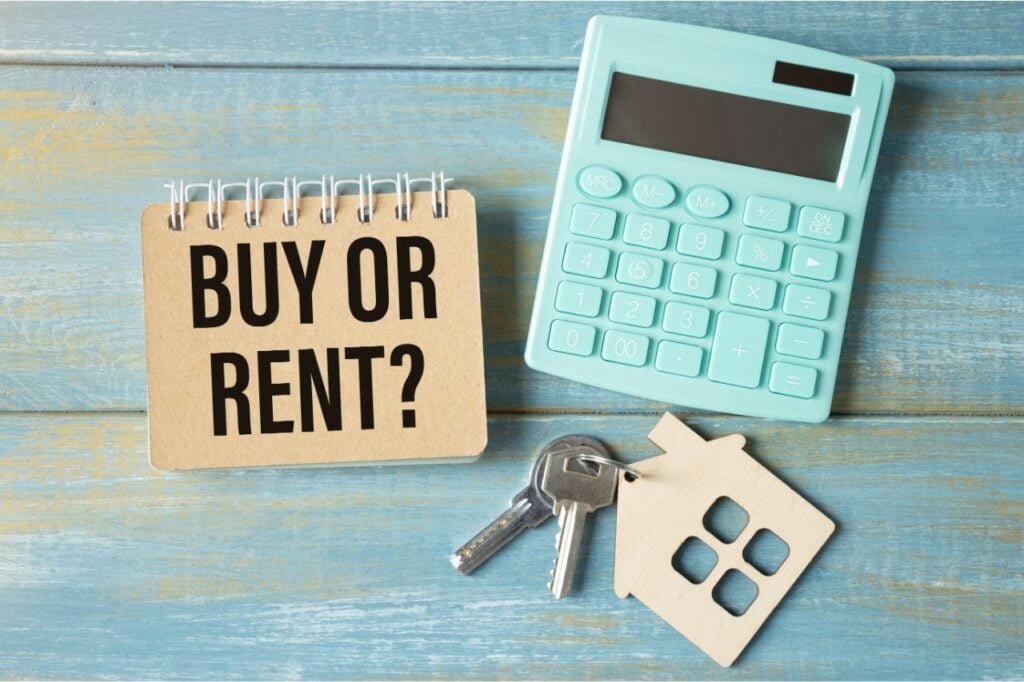The debate between renting and buying a home is a perennial topic, and it demands careful consideration. While renting offers simplicity and flexibility, buying can potentially build equity and provide long-term stability. But which is the better financial decision?
To make an informed choice, it’s crucial to analyze the total cost involved in both scenarios. Renting seems straightforward—you pay your monthly rent and that’s it. However, owning a home entails various expenses beyond the mortgage payment, including property taxes, maintenance costs, and the opportunity cost of capital.
A popular method for comparing the costs of homeownership versus renting is the “8.71% Rule,” inspired by insights from Ben Felix, a Canadian portfolio manager. This rule breaks down the annual costs of owning a home into a simple monthly estimate. By multiplying the home price by 8.71% and dividing by 12, you can gauge the monthly cost of ownership. If renting a comparable home costs less than this monthly estimate, renting may be the preferable option.
Let’s delve into the components of the 8.71% Rule:
Property Taxes: Property taxes are an unavoidable expense for homeowners, calculated as a percentage of the property’s value. In the United States, the average property tax rate is 1.11% of the home’s value annually.
Maintenance Costs: Homeownership entails ongoing maintenance expenses, typically estimated at 1-2% of the property’s value per year. These costs cover repairs and upkeep to ensure the property’s longevity.
Cost of Capital: This encompasses the opportunity cost of your down payment and the interest payments on your mortgage. The rule accounts for the potential returns lost by investing your down payment elsewhere and the interest payments on your mortgage.

While the 8.71% Rule provides a helpful guideline, it’s essential to acknowledge its limitations and consider additional factors:
Human Behavior: People are not always rational, and financial decisions may be influenced by emotions or impulsivity.
Mortgage Dynamics: Mortgage payments evolve over time, with initial payments skewed towards interest and later payments contributing more to equity. Additionally, different mortgage types and terms can impact the overall cost.
Inflation and Market Conditions: Economic factors such as inflation rates and fluctuating mortgage rates can significantly affect the cost of homeownership.
Tax Benefits: Homeowners may benefit from tax deductions on mortgage interest, reducing their overall cost of homeownership.
Despite these complexities, homeownership offers advantages beyond financial considerations. Among the benefits are predictable payments, increased control over the property, and potential capital appreciation.
On the other hand, renting provides flexibility, simplicity, and access to amenities without the burden of homeownership responsibilities.
Ultimately, the decision between renting and buying depends on individual circumstances, including financial goals, lifestyle preferences, and long-term plans. By carefully evaluating the costs, benefits, and personal priorities, individuals can make an informed choice that aligns with their needs and objectives.
While the 8.71% Rule offers a useful starting point, it’s advisable to conduct thorough research, utilize calculators, and seek professional advice to make the best housing decision. Whether renting or buying, the goal is to secure a comfortable and sustainable living situation that supports your financial well-being and overall happiness.





